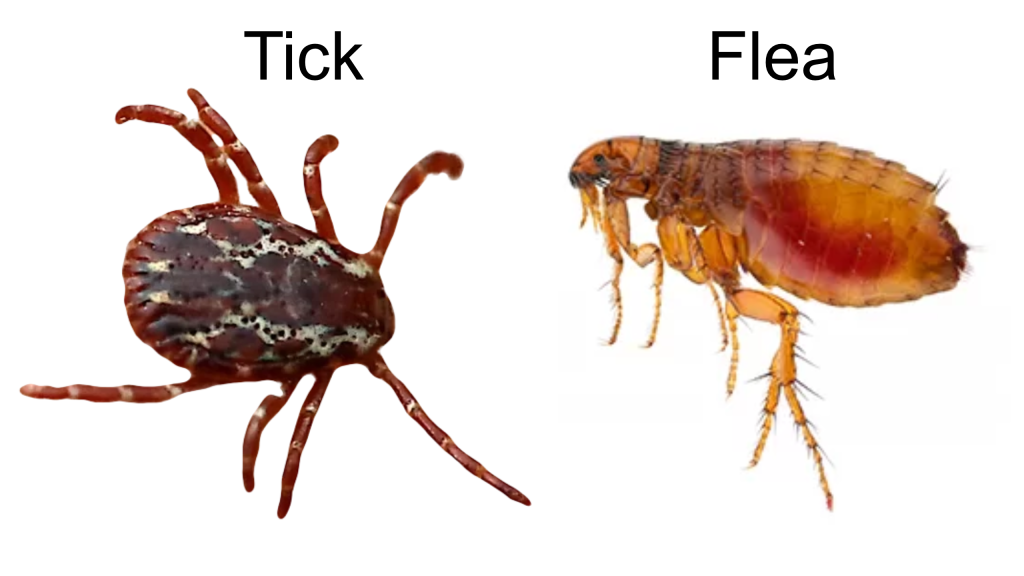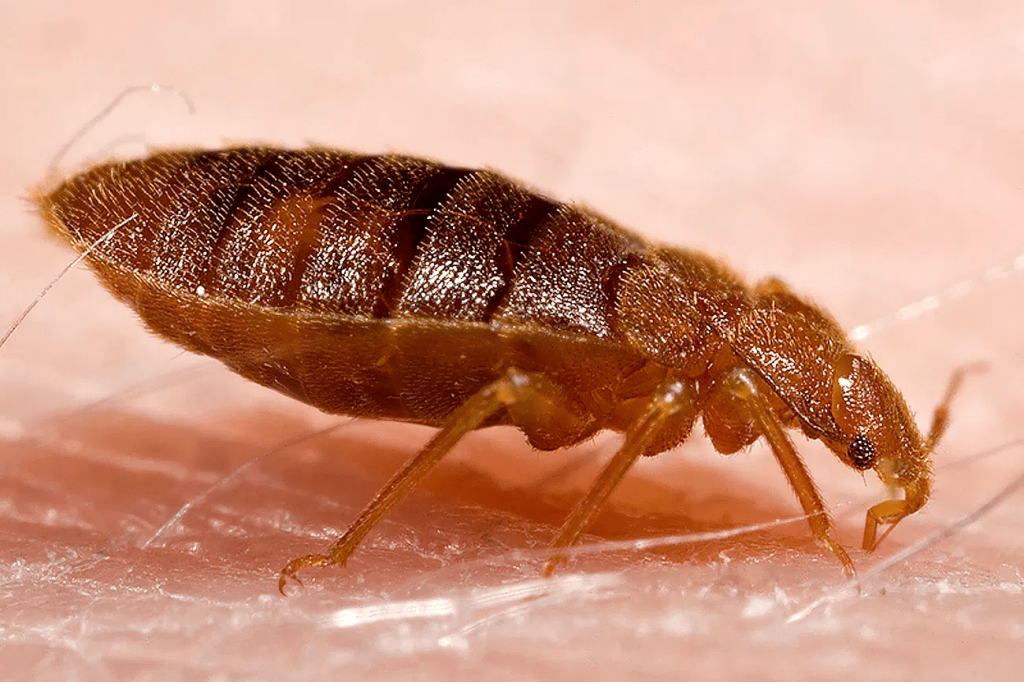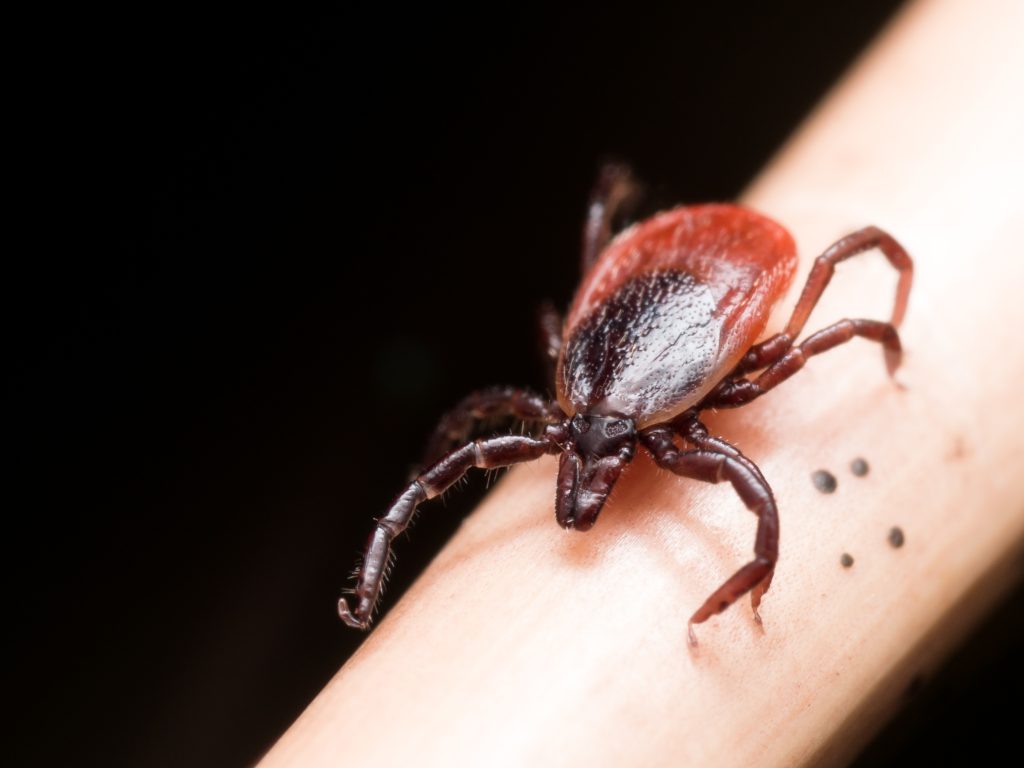There are two pests that are a top concern for avid hikers and pet owners alike. Today we’re talking about blood-sucking fleas and ticks. They are both parasitic pests that feed on the blood of humans and pets and can transmit some scary diseases. Let’s learn about their similarities and differences so you can better identify fleas and ticks, learn tips to prevent them, and know what to do if you encounter them.
What are fleas and ticks? How are they similar and different?
Fleas and ticks are known for their irritating bites and ability to spread diseases causing health issues for humans and pets. However, there are many key differences between the two blood-sucking pests.
Appearance: What do fleas and ticks look like?
Fleas: About a 1/8th inch long with six legs and no wings, tan to dark brown in color.
Ticks: Ticks are larger than fleas, around 1/16th to 1/2 inch long, with eight legs. Their color varies from brown to black, to reddish or yellowish.

Behaviors: Do fleas or ticks jump or fly?
Fleas: Fleas are excellent jumpers, capable of leaping up to 7 inches vertically and 13 inches horizontally. They will jump from host to host if necessary, but they prefer to stay on a single host for its whole life (several weeks to several months). If they reproduce on the host, fleas can quickly infest an environment, spreading from the original host to other animals or humans nearby.
Ticks: Ticks do not jump, instead they use climbing and crawling to get from host to host. They’ll wait patiently on tall grass and bushes to latch onto any human or animal that brushes by. Ticks prefer to have multiple hosts throughout their life and will remain on each for several days to weeks. Unlike fleas, they are less likely to cause indoor infestations. Luckily, neither of them can fly.
Causes: What attracts fleas and ticks?
Both fleas and ticks are attracted to hosts by body heat and CO2 emissions (breath) and rely on blood from their hosts to survive. So unlike most pests that are attracted to food and moisture like crumbs or a leaky sink, the food they’re attracted to is you!
Fleas: Fleas thrive in warm and humid weather, especially when it’s between 70-85°F and over 70% humidity. Based on body heat and odors they’ll be drawn to hosts such as humans, cats, dogs, and wildlife like rodents and deer.
Ticks: Ticks don’t have a preference for dry or humid weather, and are often found in tall grass, shrubs, and wooded areas. Using methods like sensing heat, odor, feeling movement and vibrations, and even chemical and electrical signals, ticks will sense a host and latch on.

Seasonality: Are ticks and fleas seasonal or year-round?
Fleas and ticks can be active year-round thanks to Washington and Oregon’s mild winters. They can survive in the winter by going inside homes or finding shelter outside where they go dormant.
Fleas: Activity peaks during the warmer months of spring, summer, and fall, especially when it’s hot and humid.
Ticks: Ticks are most active in the spring and early summer, particularly from April to June, but can also be found in the fall.
Reproduction: What do flea and tick eggs look like?
Fleas: Female fleas will mate with male fleas after a blood meal. The female will lay between four to eight eggs after each meal, laying over a hundred eggs in her lifetime.
The eggs are small, typically around 0.5 mm in length (similar to a grain of salt), and are oval and off-white or white. Fleas won’t lay their eggs on the host, instead, they’ll jump to the nearby area like carpets, bedding, or furniture.
Ticks: Like fleas, ticks will drop off the host while laying their eggs. But instead of just a couple of eggs, they can lay thousands of eggs at a time (2,000 to 8,000!). Tick eggs are also 0.5 mm in length and are oval or pear-shaped with a glossy texture and yellow to light brown in color.
If you find tick or flea eggs, vacuum the area and dispose of the contents in an outside garbage can. If you have pets, take them to the vet so they can be evaluated and treated for fleas and ticks, and consider contacting a pest control professional to avoid an infestation.
Are fleas and ticks dangerous?
Fleas and ticks can pose serious health risks to both humans and pets. They both have itchy and irritating bites that can cause allergic reactions. Fleas transmit diseases to humans and pets including cat scratch disease and bubonic plague. Plague? Seriously? Cleveland Clinic says, “Bubonic plague may seem like a part of the past, but it still exists today in the world and in rural areas of the US.” Fleas are the main way bubonic plague is spread as they attach to rats, mice and squirrels, and then spread to pets and humans. Ticks are most known for causing Lyme Disease and Rocky Mountain Spotted Fever which can be fatal.


How to prevent fleas and ticks
Outdoor Protection
When hiking or doing activities in the woods, make sure to protect yourself from ticks. Cover skin and wear light-colored clothing to easily identify ticks. Use an EPA-registered insect repellent and make sure it protects against ticks.
Indoor Control
Vacuum carpets, rugs, and furniture regularly, especially if you have pets. Wash pet bedding frequently with soap and hot water.
Outdoor Control
To avoid attracting ticks and fleas keep your grass mowed and try not to overwater. Keep bushes trimmed, and remove leaf litter and debris from your lawn. You can also use pesticides and tick control products to add an extra layer of protection.
Pet Management
If you have pets like cats and dogs, make sure to take extra precautions since fleas and ticks can be very dangerous for your furry friends. Regularly check your pets for signs of fleas and ticks, especially if they’ve been outdoors. Look for fleas and ticks in areas like the neck, ears, and between the toes. You can use a flea comb to help check for fleas. Always check with your vet for help with treating fleas and ticks.
What to do if you find a flea or tick
If you find a flea…
On yourself: Carefully capture it using your fingers and dispose of it by flushing it, squishing it, or putting it in a container with soapy water or rubbing alcohol to kill it. Wash the area with warm, soapy water and apply antiseptic to prevent infection. If the bite is itchy, use a cold compress or anti-itch cream.
On your pet: Use warm, soapy water or a pet-safe flea shampoo to bathe your pet. Visit your vet to get a treatment plan or apply a veterinary-approved topical flea treatment or medication.
In your home: Vacuum the area thoroughly and wash any bedding or fabric with hot water.
If you find a tick…
On yourself: Use fine-tipped tweezers to grasp the tick as close to the skin as possible and pull straight up without twisting. Dispose by flushing it or putting it in rubbing alcohol. Clean the bite area with soap and water, and apply antiseptic. Monitor symptoms such as fever or flu-like symptoms and seek medical attention if any develop.
On your pet: Remove and dispose of the tick the same way. You should also clean the area with soap and water and apply antiseptic. For animals, symptoms can include fever, lethargy, and loss of appetite so keep an eye on them and make sure to contact your vet if they seem off.
Now you know all about the differences between fleas and ticks. We hope you feel more confident if you have to deal with one of these suckers. To proactively keep your family and pets safe from pests, consider investing in pest and rodent control. Learn about Interstate’s pest and rodent control services.